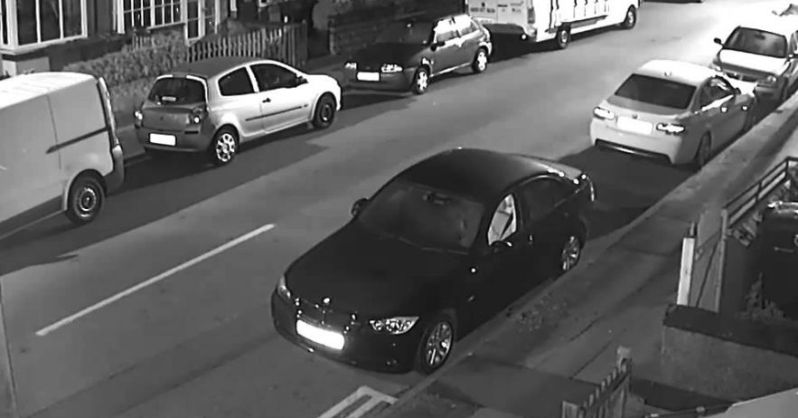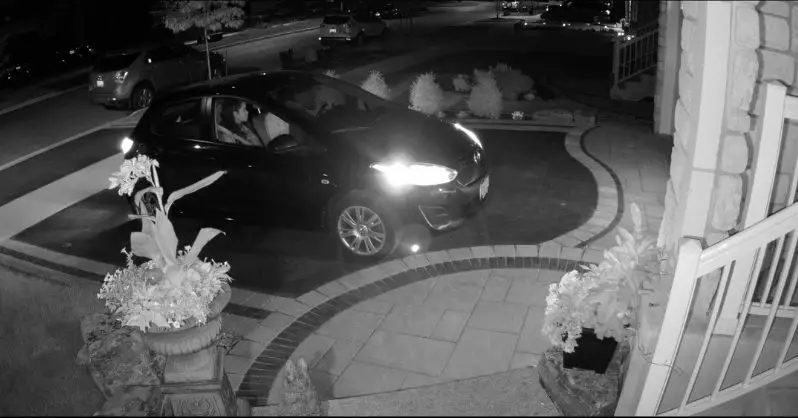When it comes to home security, most people think of cameras keeping an eye on the interior of their house. However, there are also security cameras that can see in the dark, which can be a huge asset when it comes to protecting your property.
However, these surveillance devices have limitations in terms of monitoring at night, and you should be aware of how far they can actually see at night. In this blog post, we’ll take a look at how far these night-vision security cameras can see and what factors can affect their performance.
How Far Can A Security Camera See in The Dark?

Typically, top-notch security cameras with night vision can see up to about 100-150 feet in complete darkness. Average quality cameras may only be able to see about 30-50 feet at night. Though infrared cameras need light to function, they can still produce a clear image in low light conditions.
On the other hand, thermal imaging cameras can see even without any presence of light. These types of cameras use heat signatures to produce an image, making them ideal for surveillance in the dark.
So, when it comes to determining how far a surveillance camera can see in the dark, the answer depends on a few factors, including the type of camera, the amount of light available, and the level of contrast between the subject and the background.
For example, if there’s a street lamp nearby, an infrared camera will have an easier time seeing objects that are closer to it. Conversely, if there’s no light at all, a thermal camera will likely have the best performance.
For your better understanding, let’s see more details about how modern security cameras work at night.
How Do Security Cameras See At Night?

Nowadays, security cameras are designed to see in the dark. In recent times, two types of security cameras that can see at night are infrared light-equipped security cameras and thermal imaging system-enabled security cameras. Both types of security cameras have their own set of benefits and drawbacks.
Below I have discussed both types of security cameras in detail:
Infrared Light-Equipped Security Cameras
As the name suggests, these security cameras are equipped with infrared lights. These infrared lights are located on the front side of the security cameras. The working principle of these lights is similar to that of a flashlight.
The light emitted by the infrared waves is invisible to the human eye but it can be picked up by a security camera. These lights are used to illuminate the area in front of the camera so that the camera can see clearly in the dark.
One of the main benefits of using these lights is that they produce good quality images even in low light and no light conditions. On the downside, infrared light-equipped security cameras can only see clearly in a short range.
Thermal Imaging System-Enabled Security Cameras
These types of security cameras are equipped with a thermal imaging system. This system uses heat emitted by objects to see things in the dark.
The advantage of using this system is that it can see things in total darkness. Also, these cameras can detect objects that are almost 100-150 feet away. However, these cameras are expensive compared to others.
Now let’s take a look at what factors can affect their performance while monitoring at night.
Factors That Affect A Security Camera’s Performance At Night
There are many factors that can affect the performance of a security camera at night. Some of these factors are mentioned below:
Focal Length
It is the distance between the lens of the camera and the sensor. A shorter focal length produces a wider field of view. On the other hand, a longer focal length produces a narrower field of view.
Aperture
It is the size of the lens opening. A larger aperture lets more light pass through the lens and thus, produces a better image. Moreover, it also helps in getting a clear image of distant objects.
Camera Quality
Anyone who has ever tried to take a night photo with their smartphone knows that cameras just don’t perform as well in low-light conditions. The same is true for security cameras.
In order to get the best possible image at night, it is important to consider the quality of the camera. Higher-quality cameras will have larger sensors and better lenses that allow more light to reach the sensor. This results in a clearer image, even in low-light conditions.
Lighting Conditions
Lighting can also affect a security camera’s performance at night. If there is not enough light, the image will be darker and it will be more difficult to make out details. However, if there is too much light, the image can become overexposed and wash out details.
Camera Placement
Camera placement is also important for getting the best possible image at night. The camera should be placed high enough so that it has a clear view of the area, but not so high that it is obvious and can be easily tampered with. In addition, the camera should be positioned so that any potential sources of light (such as streetlights) are not directly behind it.
Resolution
A higher-resolution camera will be able to produce clearer images in low light, while a lower-resolution camera might struggle to capture useful footage. A 720p camera will be adequate for most purposes, but if you want to be able to zoom in on details or capture license plates, you will need a 1080p or higher resolution camera.
By taking these factors into account, you can ensure that your security camera will perform at its best, even in low-light conditions.
Tips To Improve The Night Vision On My Security Cameras
For many of us, our security cameras are an important part of keeping our homes and families safe. But what happens when the cameras can’t see at night? Luckily, there are a few things you can do to improve the night vision of your security cameras.
First, check the infrared LEDs and make sure they are clean and unobstructed. Dust and dirt can quickly build up on the LEDs and reduce their range and efficiency.
Second, make sure that the camera is positioned correctly. The camera should be positioned so that it has a clear view of the area you want to monitor, without any obstructions.
And finally, consider investing in a camera with high-quality night vision capability. Good night vision cameras use special infrared technology to provide clear images in low-light conditions.
Conclusion
Security cameras are a great way to keep an eye on your property, whether you’re home or away. However, it’s important to know what kind of coverage they provide in darkness so that you can make the best decision for your needs. We hope this article has helped you understand how far security cameras see at night and what you can do to improve their performance.
Related Post:
